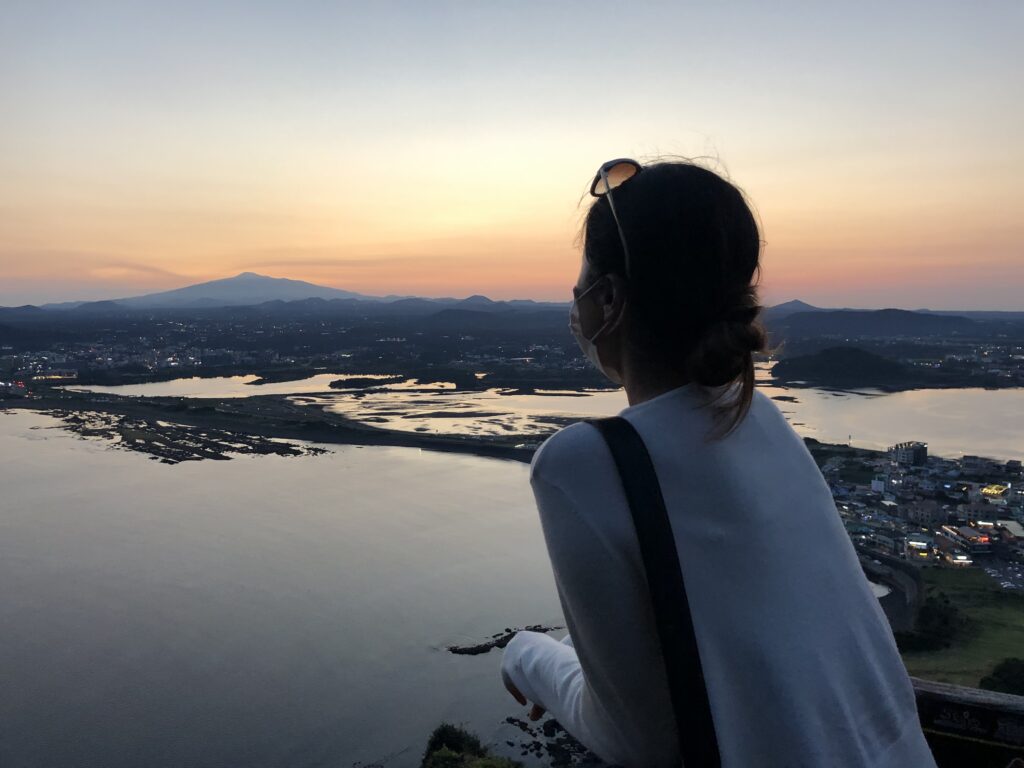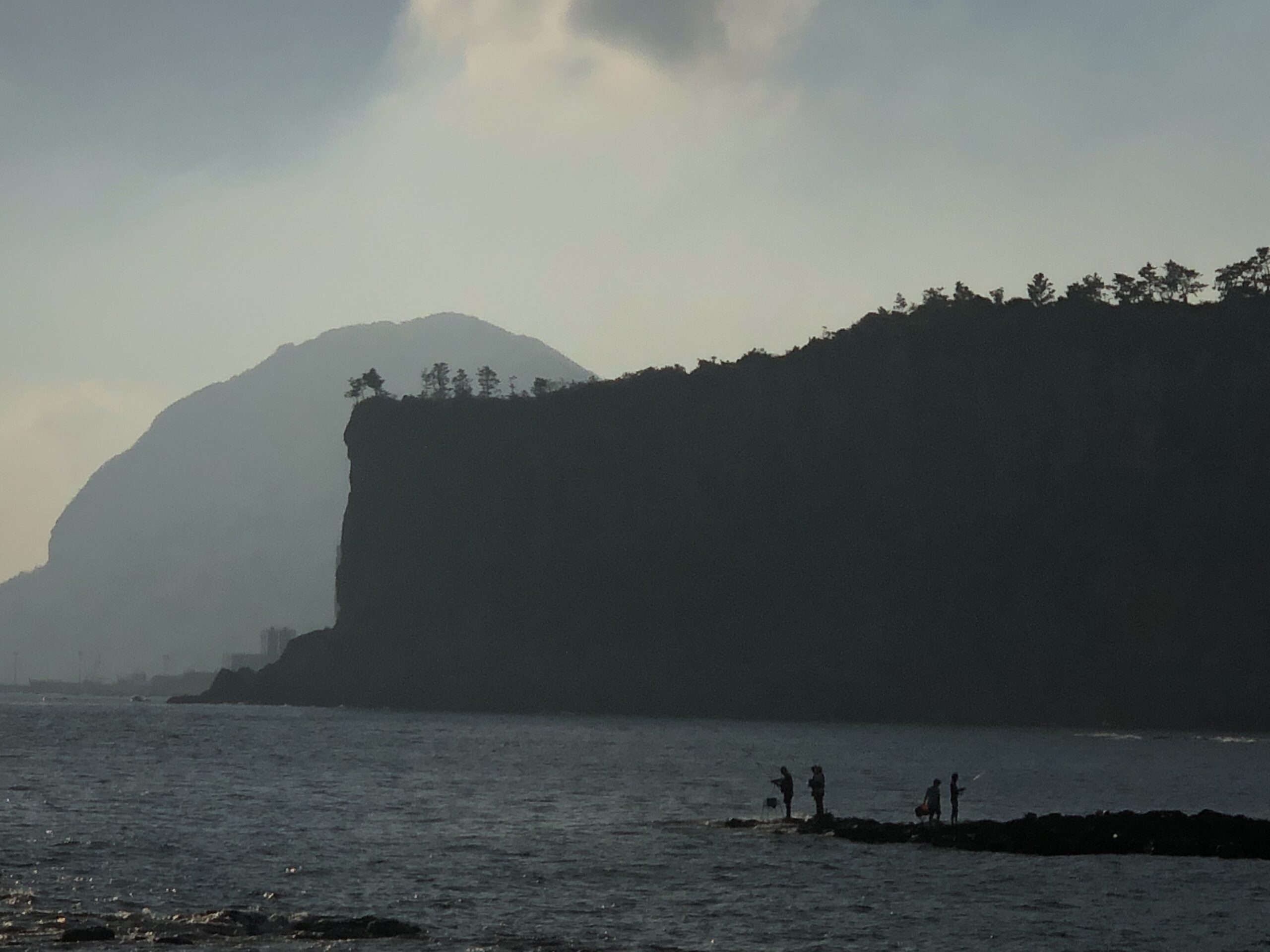In September 2020, Ella and I embarked on a three-week adventure exploring the wondrous Jeju Island off the south coast of Korea. The island is the result of the mighty Hallasan volcano (fortunately inactive), and black volcanic rock scattered all over the island is a testament to its origins. Jeju is different to the rest of Korea – sparsely populated, peaceful, with a wind-swept natural wildness.
So what were the highlights? We’ve broken the trip into a handful of “things you should do when you find yourself on Jeju Island”. We settled on 18 of these – nine in Part 1 and nine in Part 2. We hope you enjoy them.
(1) CLIMB AN OREUM
Jeju island is one big volcano. By definition, a volcano is a large underground chamber full of magma combined with a central vent that bursts up to the surface. However, often fractures form on the flank of a volcano, which can reach that magma chamber and lead to “flank eruptions” – basically mini volcanoes scattered around the central vent. When the volcanic activity slows down, these mini volcanoes or “parasitic cones” slowly turn into rounded hills. In Jeju’s dialect of Korean, these are called “oreums”. And on Jeju Island, there are 368 of them scattered across the landscape.
These oddly-round hills are beautiful – sometimes covered in a manicured lawn of short grass and sometimes covered in forest. They make for excellent short hikes (1-2 hours). Simply find the oreum’s parking lot using your car’s navigation, and then set off on one of the trails. We managed to squeeze in about five such climbs during our stay. Our favourites were the Ttarabi Oreum (따라비오름) and the Yongnuni Oreum (용눈이오름).
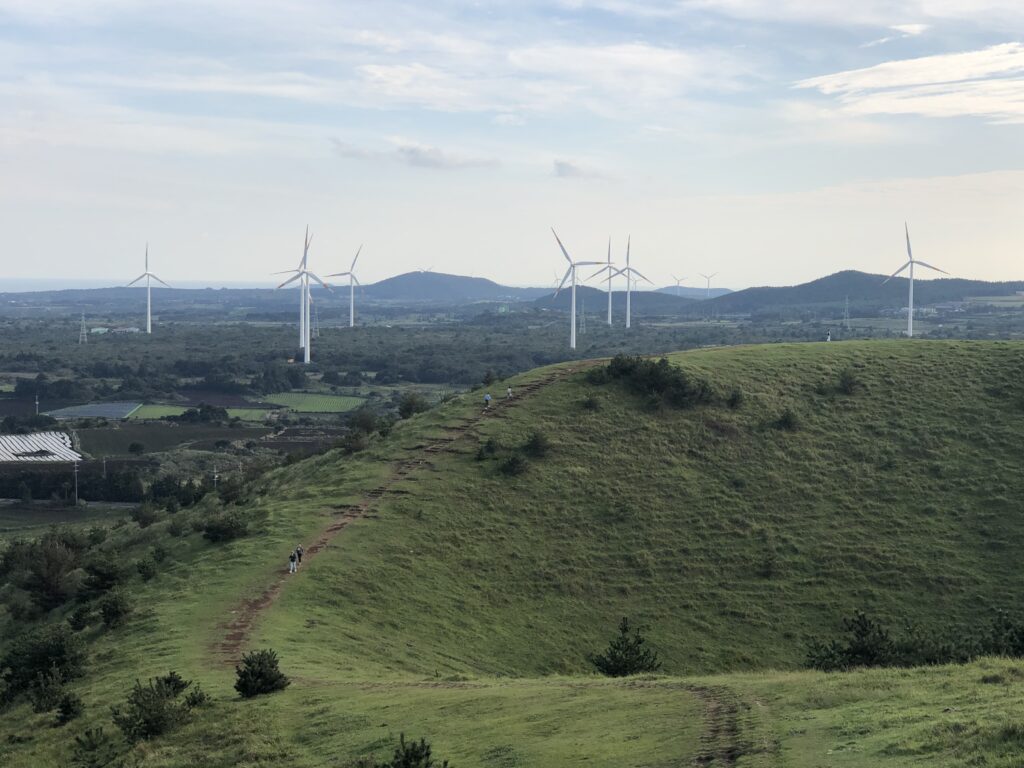

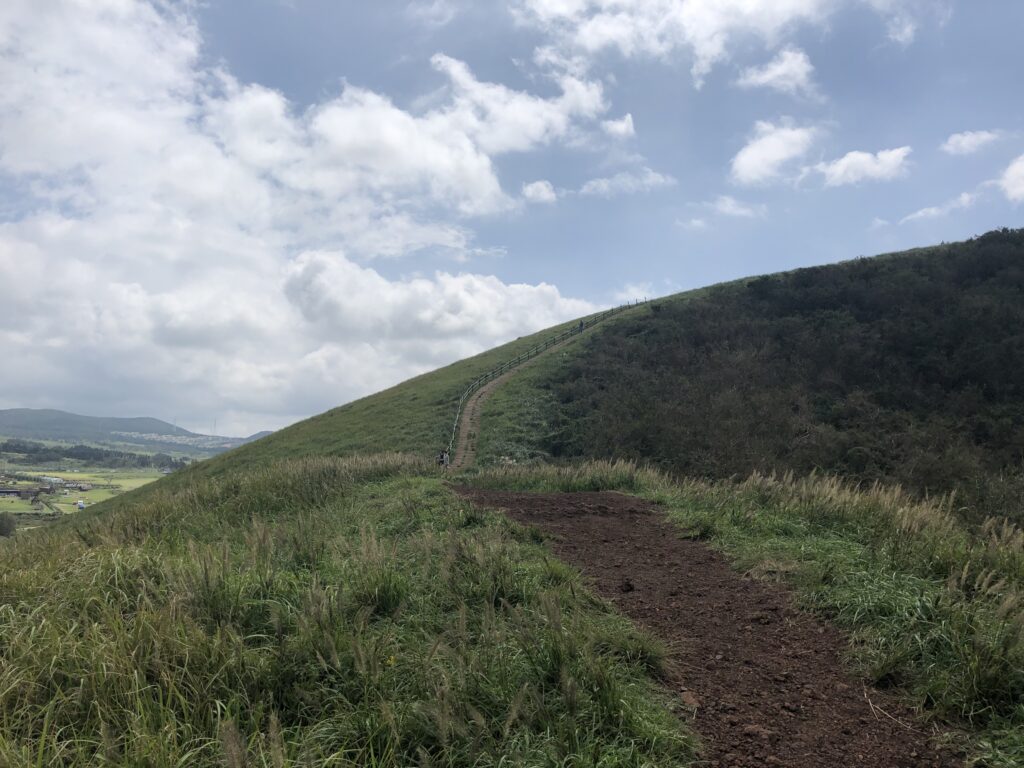
(2) CHECK OUT THE KIM YOUNG GAP GALLERY DUMOAK
Not many people knew Oreums like a chap named Kim Young Gap. He was instrumental in recognising and bringing the beauty of Jeju’s oreums to the rest of the country and the world with his incredible photography. The self-taught photographer moved to Jeju and spent decades documenting the island’s landscape. Before he died of ALS in 2005, he completed a gallery of his works in an abandoned school near the village, Samdal-ri. It is a very worthy stop.
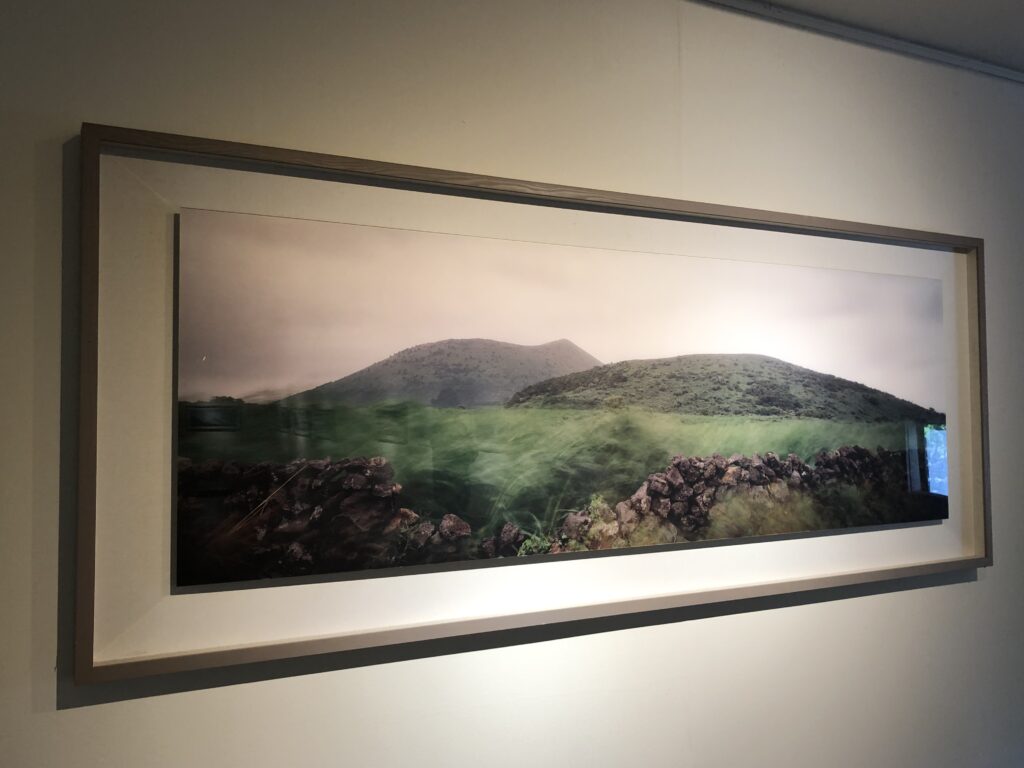
(3) TRY SOME UNUSUAL SEAFOOD
Naturally, life on an island involves a fair amount of seafood – fish, squid, prawns, crab, shellfish, octopus, but also seaweed, bomal (a type of small sea snail), abalone (also a sea snail), and sora (another sea snail!). Some of these species are prize catches for Jeju’s famed and hardy female free divers, or haenyeo. The key here is to simply be as adventurous as possible. Bomal is considered a health food in some circles, while abalone soup is simply delicious.
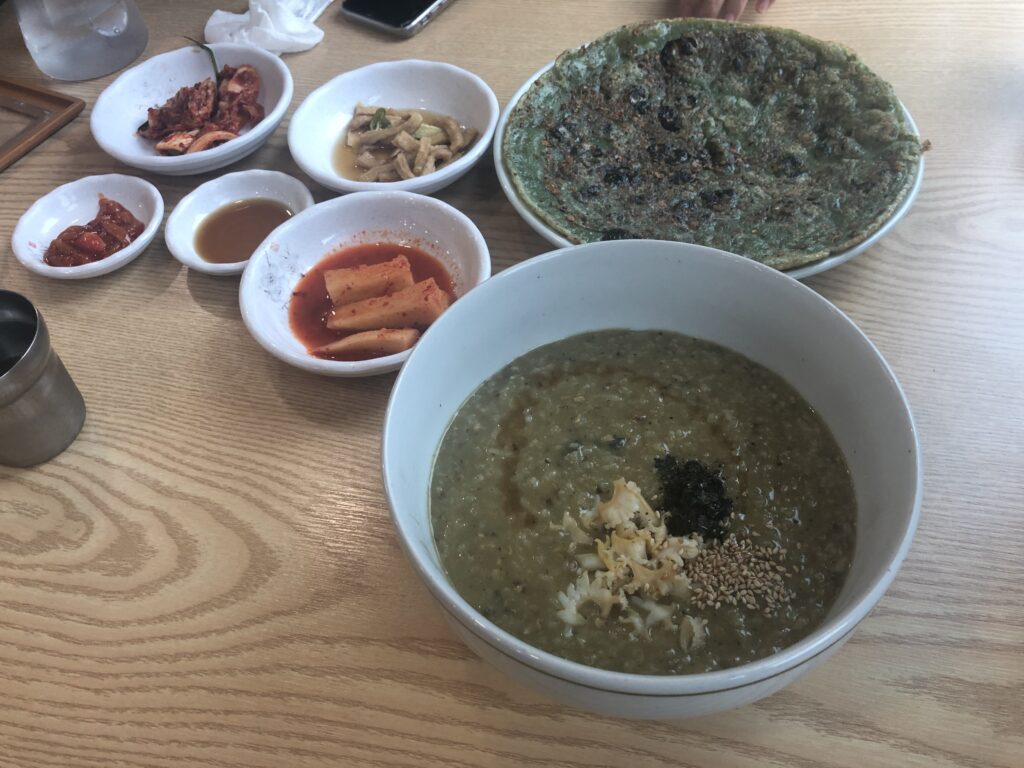
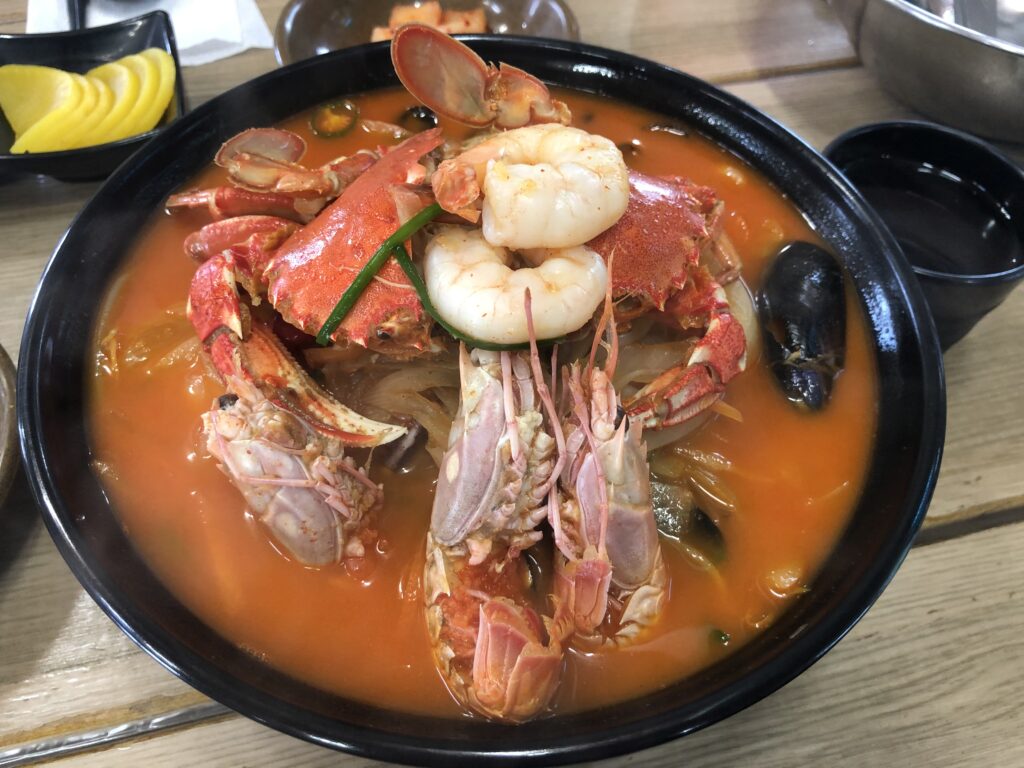
(4) VISIT UDO
Udo is a gem – the largest of Jeju’s surrounding islands and a short 15-minute boat ride from the eastern port of Seongsan. It has a couple really beautiful white sand beaches along with decent cafes and restaurants. But the real fun is simply hiring a scooter and cruising along the seaside road that rings the island. It has become extremely popular and less of a getaway than many expect, but still serves as an excellent day trip.
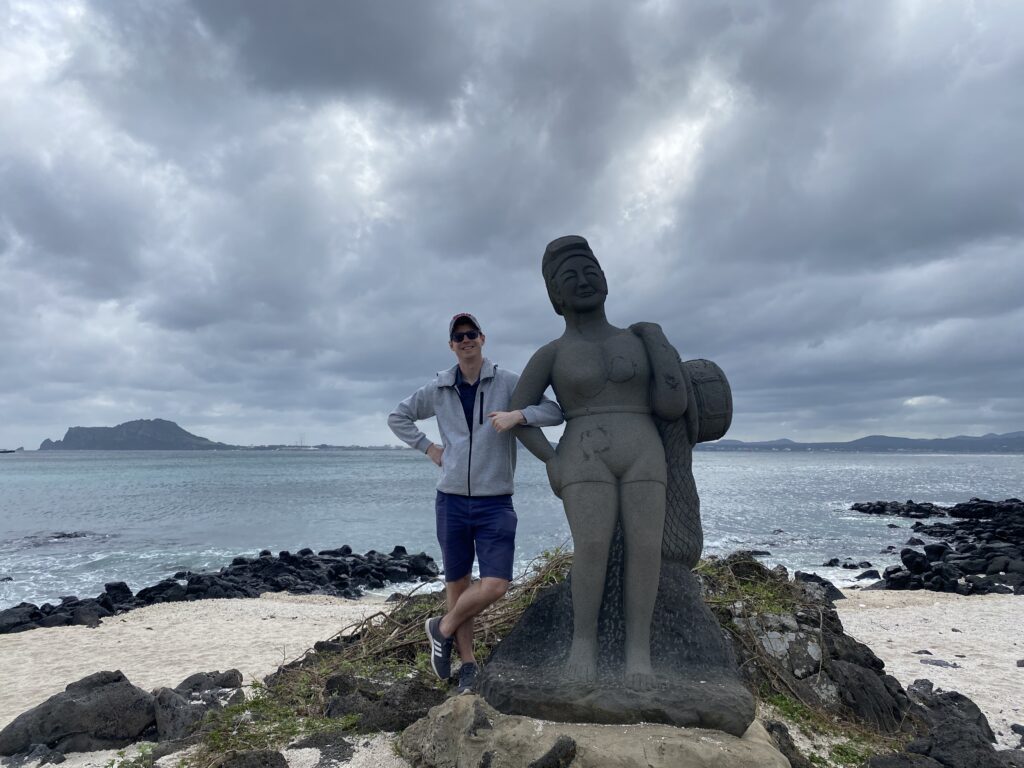
(5) CREATIVE KIMBAB
Kimbab in Korea is like toast and jam in the West. So it was a pleasant surprise to find some of Korea’s most creative kimbab shops on the island of Jeju. They give this standard “fast food” of Korea an impressive upgrade. Whether it is packed with fried pork, mixed with abalone, or incorporates fried tofu, there’s a whole range of really interesting options to choose from. We recommend Kimmanbok (김만복), Oneunjeongkimbab (오는정김밥), Dodottotkimbab (도도톳김밥).
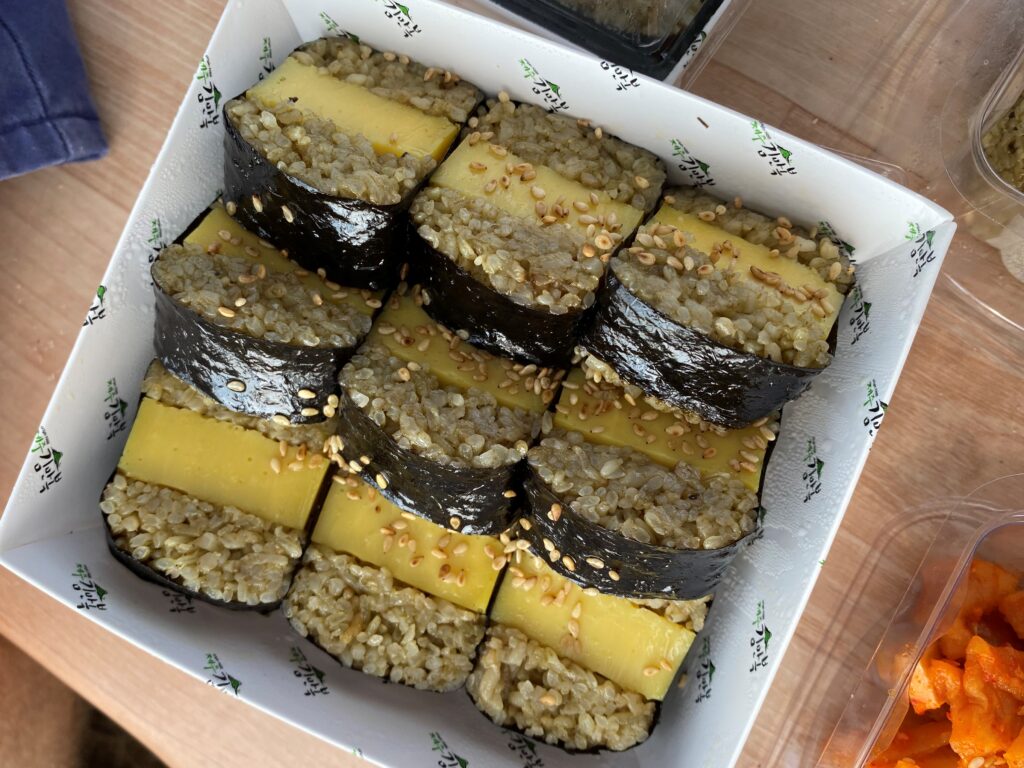
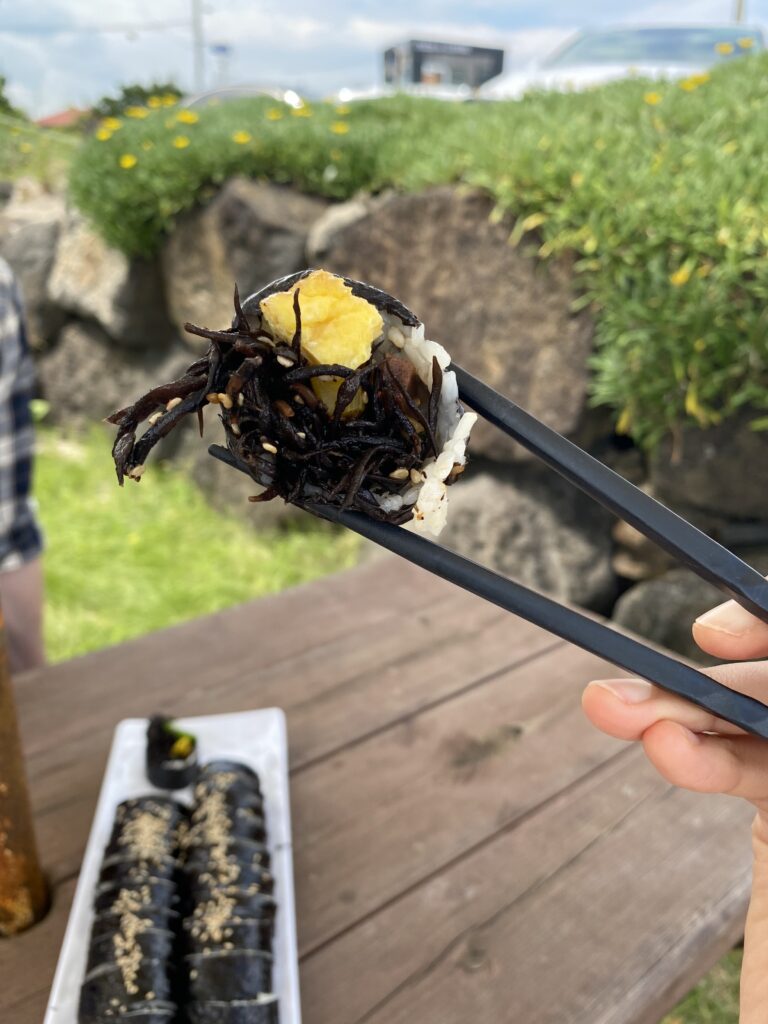
(6) A PHOTOGENIC ROCKY COASTLINE
Jeju’s black rocky coastline is iconic, particularly along the island’s southern coast. The first picture below is from Jusangjeollidae (주상절리대), a stretch of coastline with rectangular rock columns marching out of the sea (ala Giant’s Causeway in Northern Ireland). These columns formed from lava being rapidly cooled as it flowed into the sea, contracting into individual pillars. A little closer to the town of Segwipo, in the second picture below, you can see the impressive 20-metre tall volcanic basalt pillar called Oedolgae (외돌개; or lonely rock). In the third picture below, from the island’s west coast, you can see old lava bombs – rocks from nearby volcanic explosions that peppered the coastline. Jeju’s volcanic beginnings are everywhere you look.
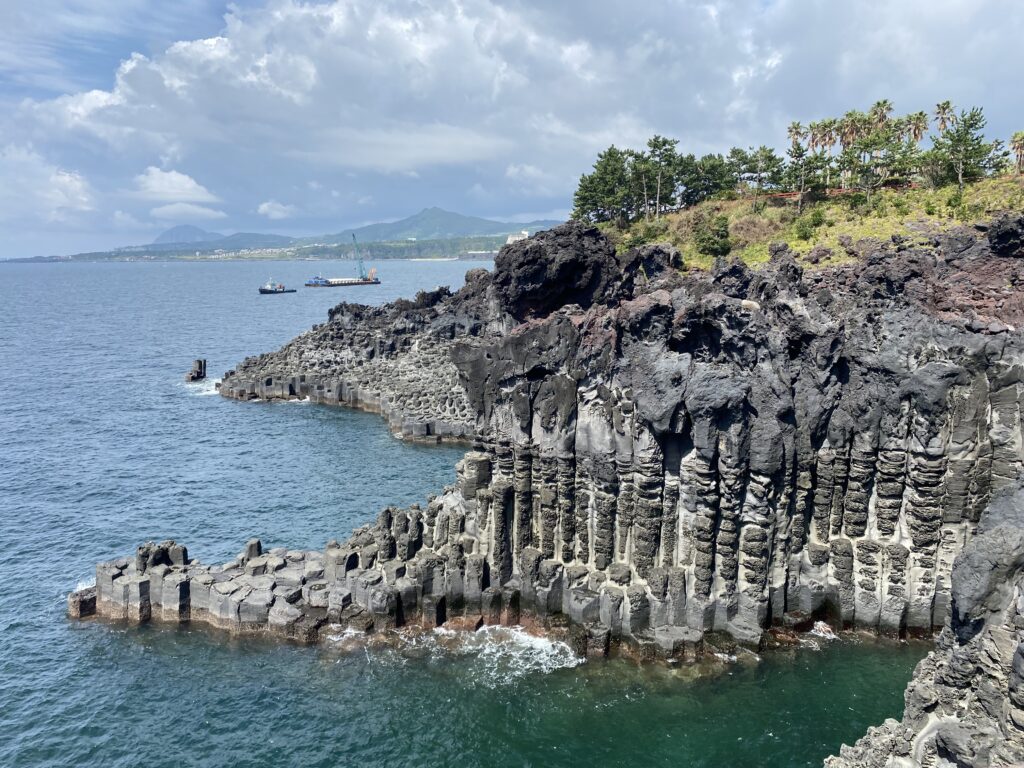
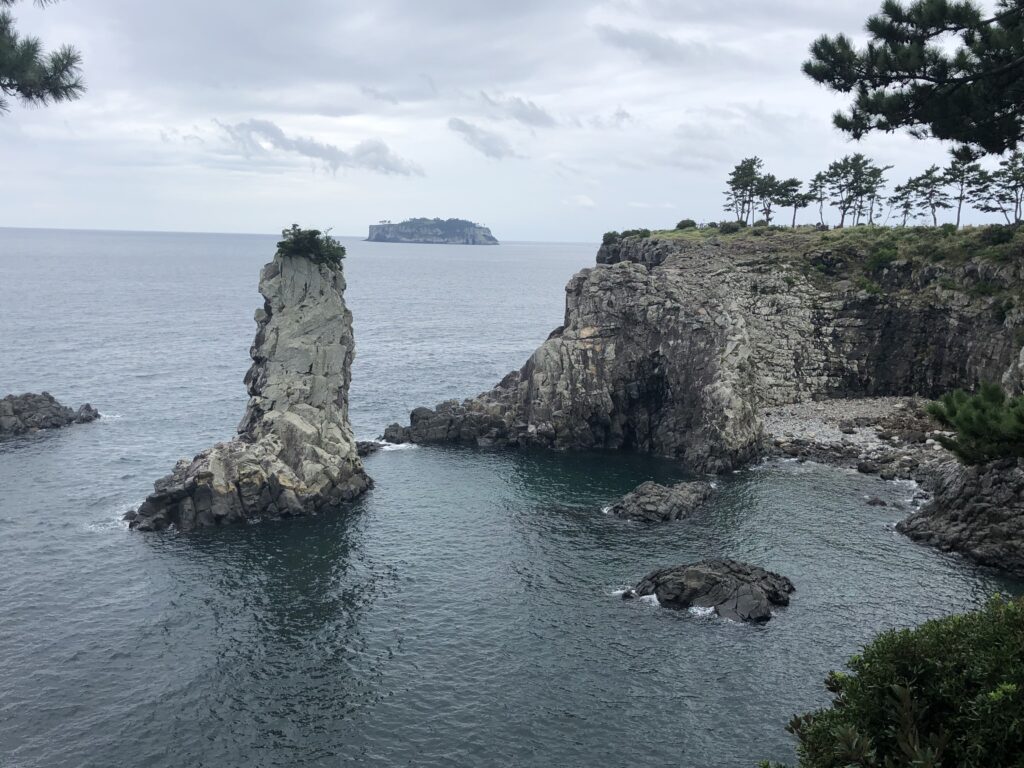
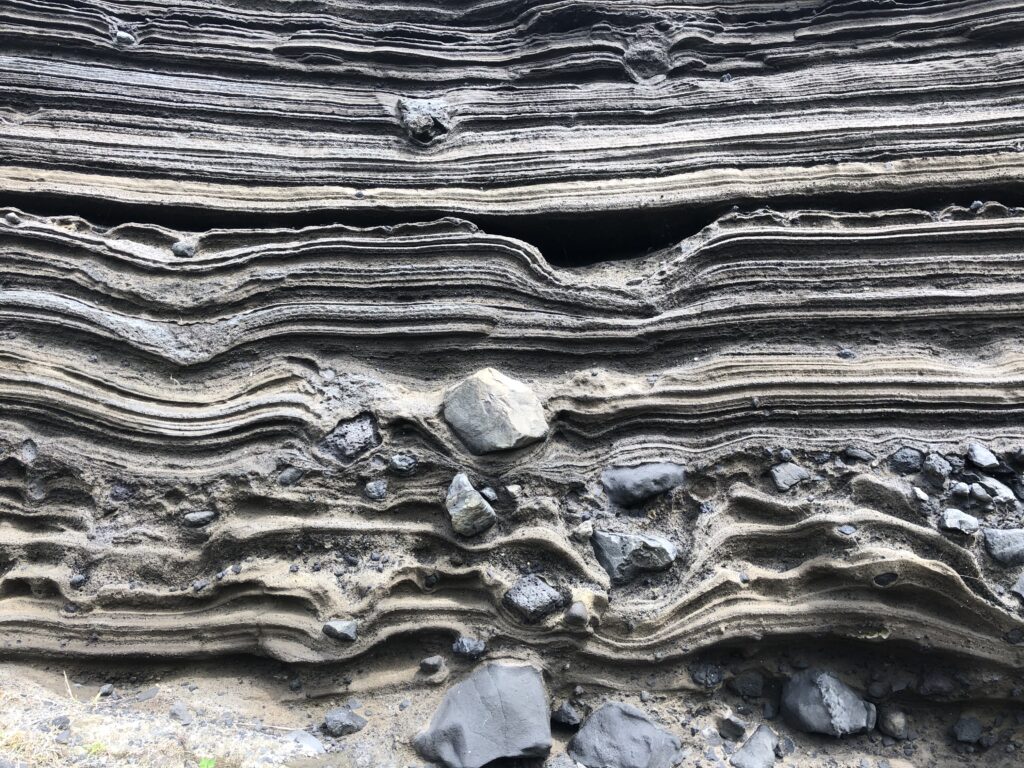
(7) VISIT A MARKET
Jeju has two main open-air traditional markets – Dongmun Market in Jeju City in the north and Olle Market in the town of Seogwipo in the south. Both are excellent places to wonder around, and look for snacks, supplies, and gifts. Dongmun has some very good food options along with heaps of juicy Jeju tangerines (귤) on sale – one of Jeju’s most popular exports. Make it a lunch stop and you won’t be disappointed.
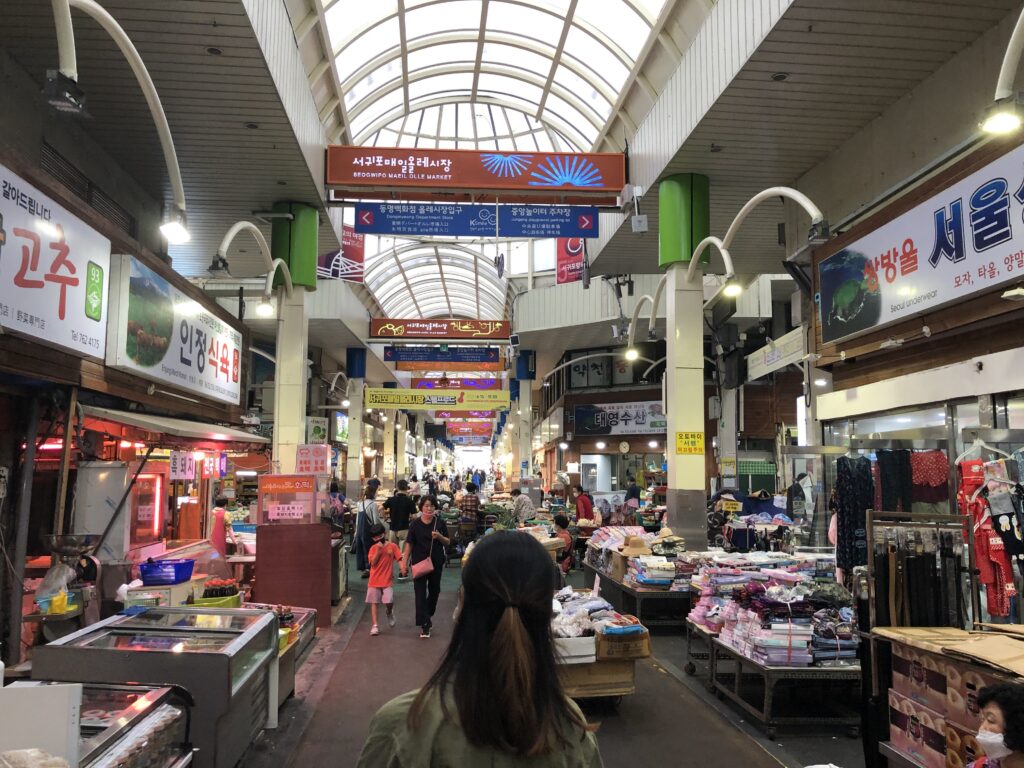
(8) UNUSUAL COFFEE SHOPS
Jeju is littered with lovely coffee shops of all shapes and sizes, and the quality of the coffee was generally top-notch. We found some fantastic beach-side coffee shops with large decks overlooking the waves, but also ones with authentic traditional architecture and others deep in forests. The two-story Cafe Wollyeong housed a cave and pool inside. Another in the town of Sehwa called Cafe Lalala included a postcard with your order that you could fill out and pop in the on-site free postbox. The concepts were creative and thoughtful, and searching out interesting coffee shops became its own adventure.
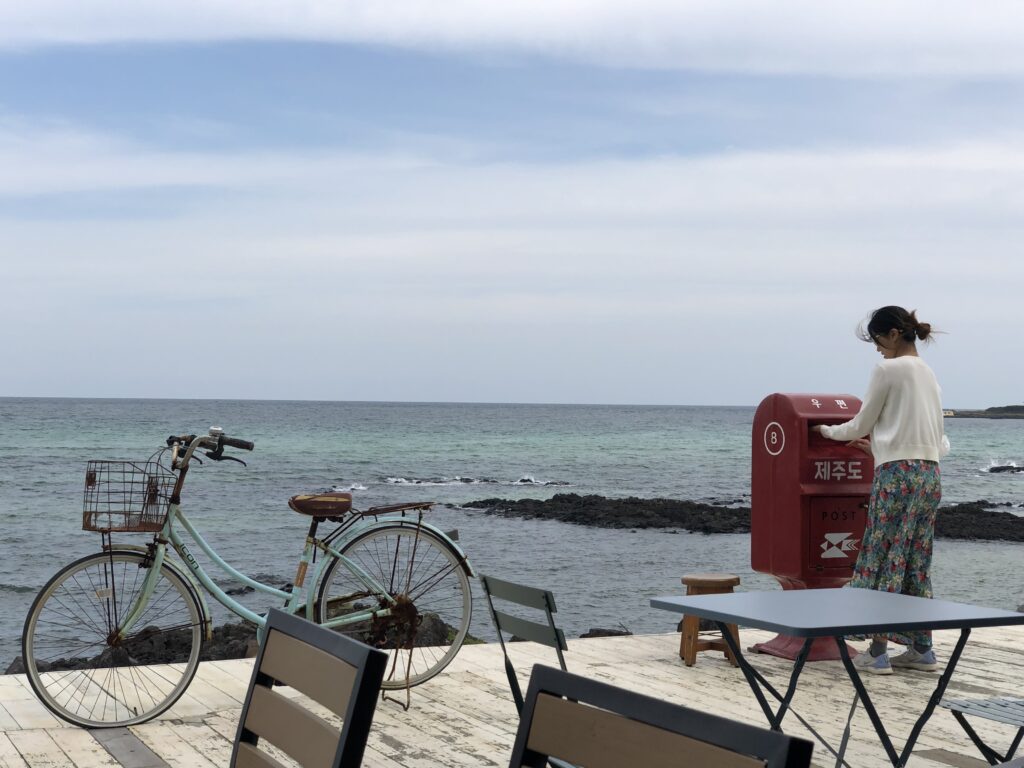
(9) SUNSET ON SEONGSAN ILCHULBONG
Of all Jeju’s parasitic cones, the most impressive is the 182m-tall Seongsan Ilchulbong (성산일출봉) that launches dramatically out of the sea in Jeju’s southeast corner. A 20-minute hike up some steep stairs gets you to the crater rim with awesome views in all directions. Tradition, and its name, suggests getting up there for sunrise. We found it easier to make the sunset slot and were mightily impressed.
